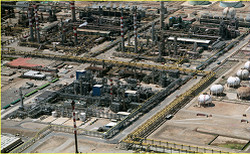Novel resource indicators and tools for competitive and sustainable continuous processing
The new tool will be based on a new modelling and diagnosis framework that will provide better information on the resources performance of the industrial processes that it is targeting. As a result, this tool will allow for better decision-making at the operational level, as well as at design and management level, as well as contribute to the EU’s ambitious and overarching sustainability targets. According to Mr. José Luís Vadillo, project manager at CIRCE (the research centre leading the project), there have been two major impacts recorded by the project for the various industries involved. The first is the identification of the most inefficient spots (45 % of the economic losses and 55 % of the energetic losses) leading to estimated savings of approximately EUR 3 million in the ethylene cracker of the Dow Chemical plant in Tarragona, Spain. The second is the reduction of gas consumption (around 2-4 %) and power consumption (around 2-3 %) in the drying and transport process of granulated fertiliser undertaken by Spanish company Fertinagro. This led to an estimated saving of EUR 350 000 - 400 000 per year. As such, the project, which is due to finish in July 2017, is well underway to achieving its ambitions to strengthening the EU’s energy-intensive process industries by saving natural resources and improving productivity. To successfully measure its impact, the project has developed a detailed set of standardised Key Resource Indicators (KRIs), innovative due to their ability to measure the quantity and quality of all consumed resources (such as water and materials). ‘The term KRI is used instead of KPI (Key Performance Indicator) in order to focus on the measurement of the resources,’ Mr. Vadillo stated. TOP-REF has developed indicators for material efficiency, direct energy consumption, gross water use, net water use and the Resource Exergy Indicator, a novel inclusive indicator of overall resource usage. ‘The indicator on Direct Exergy Consumption will help quantify the quality of the energy of existing operations and processes, and will give information regarding the inefficiency spots. It will also quantify the efficiency increase or decrease accomplished through improved operation points achieved by modeling,’ commented Mr. Vadillo. ‘In addition, material efficiency and water use indicators give straightforward information about the reduction of material and water use, and will help to measure resource availability.’ The KRIs have been defined with a comprehensive scope taking into account the priorities and concerns of the entire EU, from policymakers to citizens, from public authorities to industry. At the end of the project, the KRIs will form the basis of new standards and will supplement existing standards for EU stakeholders. ‘In brief, what is going to help policymakers is the energy KRI that will allow to assess the cost and value of the process flows and to formalise a standard language,’ explains Mr. Vadillo. ‘This will precede the establishment of a common and objective reference and ability to compare the performance of different processes, even between sectors.’ TOP-REF is yet to begin its demo phase, where it will be conducting three distinct pilots in the chemistry, refining and fertiliser sectors. As a result of these pilots, the project will refine its KRIs further to maximise their impact. Mr. Vadillo emphasises that another important issue to address is to test the methodology within other industries, as well as those targeted by the project. In the longer-term, the TOP-REF team hopes that the project will make a valuable contribution to achieving the ambitious targets set by the Sustainable Process Industry through Resource and Energy Efficiency (SPIRE) roadmap. This roadmap is targeting a 20 % increase in energy efficiency, a 20 % decrease in raw material usage, and the reusability and recycling of materials of between 70 and 100 %. All this will be achieved while decreasing production costs up to 15 %. Even with such high ambitions, TOP-REF is well on the way to delivering critical tools to the EU industrial processing sector that will significantly enhance the resource efficiency of energy-intensive continuous processes.
Keywords
TOP-REF, energy intensive industrial processes, material efficiency, Key Resource Indicators, KRIs, Resource Exergy Indicator, common objective reference







